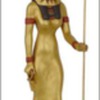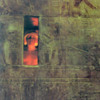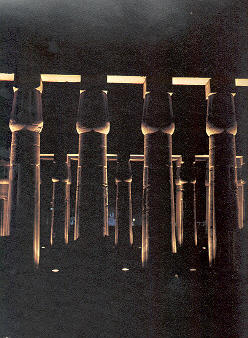quote:
From Practical Egyptian Magic, pp 37-
Sections of the Egyptian pantheon can be said to conform to the archetypal pattern of other early cultures, although there are aspects that do not slot easily into general correspondences as we shall examine in detail later. Of course it can be argued that an archetype, manifesting through any given civilization or culture, will automatically assume an overlay relative to the individuality or idiosyncrasies of the indigenous people in question. Thus, a maternal archetype appearing in a patriarchally-oriented culture would tend to manifest more domestically than it would amongst a matriarchal people, where it might assume religious identity as a wisdom goddess or perhaps a protective warrior, or in a balanced society where it could even emerge in masculine form...
A very definite story is woven around the histories of the early Egyptian gods; to see the whole picture we will need to pick up the threads of what happened to Ra prior to the arrival on the scene of Isis and her family. We are told that he reigned peacefully over all creation while he was still young and strong but, as he aged, a group of dissenters moved to take advantage of him. We are not told who these beings were or whence they hailed; the inference is that they were not necessarily connected with this Earth as we know it but were more like players in some cosmological drama. Ra was so enraged at this uprising that he hurled his divine eye at the revolutionaries in the form of the goddess Sekhmet (the lioness goddess whom some believe to be an aspect of Hathor) who emerges at this point as Ra's daughter. Sekhmet went among the evil ones dispensing havoc and bloodshed until Ra finally called her off, fearing that she might overdo things a bit and polish off his handiwork entirely...
quote:
From The Goddess Sekhmet, pp 51
Such a statue had the capacity to heal, to overcome enemies, to perform a great many other magical and miraculous feats, but most important of all, to teach. The statue sometimes moved--for example, when performing the movement called Hanu, a gesture of the head or hand designating some person as having been "seized by the God"--that is, selected for a special role of purpose. A God or Goddess could also be communicated with by means of less powerful statues, which were charged at regular intervals by means of magical-religious rites. All of these magical statues and idols became more powerful the more they were worked with and worshipped.
In considering the statues, it must be clearly understood that idols are experienced not just as representations of a God, but as "Theophanies," as the living God. The God exists apart from the idol, of course, but it is through the images, the magical statue or other "objective work of art" (when it is that) that the interaction of human with Diety takes place. ..
A School teaching the Way of the Goddess Sekhmet may be called a House of Life (the ancient Egyptian designation) or, alternatively, a Fifth Way School...
All such exercises have the purpose, first of all, of furthering that admonition which is common to all esoteric Schools: KNOW THYSELF! To achieve this, the exercises teach basic mindfulness, concentration and improved use of the self in general-bodily, mentally and emotionally-laying the necessary groundwork for spiritual practices which will be effective...
As the Work progresses, there will be moments of "waking up" when-and then only-it will be clearly recognized that one has not been awake before. Those experiences, in the beginning, will be shocking and painful with respect to the human condition. To observe the sleepwalking state of humanity is to understand much about evil and pain and what the saintly Mr. Gurdjieff called "the terror of the situation." But, in the fact that it is possible to emerge from that state of sleep there is hope-in fact the only hope!
quote:
From The Truth About Egyptian Magick, pp 45
Egyptian Magic reveals Egyptian Magick in a way that has never been done before. It challenges the established assumption that The Book of the Dead is only a collection of spells and incantations used to guide a newly deceased king, priest, or scribe through the heavens and hells of a primitive religion. It demonstrates tha the texts now called The Book of the Dead were known as Coming Into the Light and were originally used by living magicians as powerful and highly effective rituals to be practiced as part of a complex form of Magick...
Egyptian Magick offers modern humanity an invaluable opportunity to understand the roots from which it sprang. Because of this, the artifacts of ancient Egypt are being studied in great detail in hopes that they will reveal new insights into our role in the universe. The art and texts of the ancient Egyptians is our primary source of information, and they are finding welcome audiences today. A few years ago, Egyptian art was considered crude and primitive. Today it is recognized as a true and compelling art form. A few years ago, the Egyptian religion was considered primitive and shamanistic. Today, we recognize that the Egyptians had a very complex and sophisticated religion which served them well for more than 6,000 years. A few years ago, the texts of the ancient Egyptians were considered the rudimentary pictographs of a primitive people. Today, new translations of the ancient texts are revealing that the symbols of ancient Egypt were metaphors of the collective unconsciousness of humanity. Careful study has revealed that the ancient Egyptians created a complex, civilized society that has never been surpassed. We have much to learn from the wisdom of the ancient Egyptians if we are to survive the atomic age.



